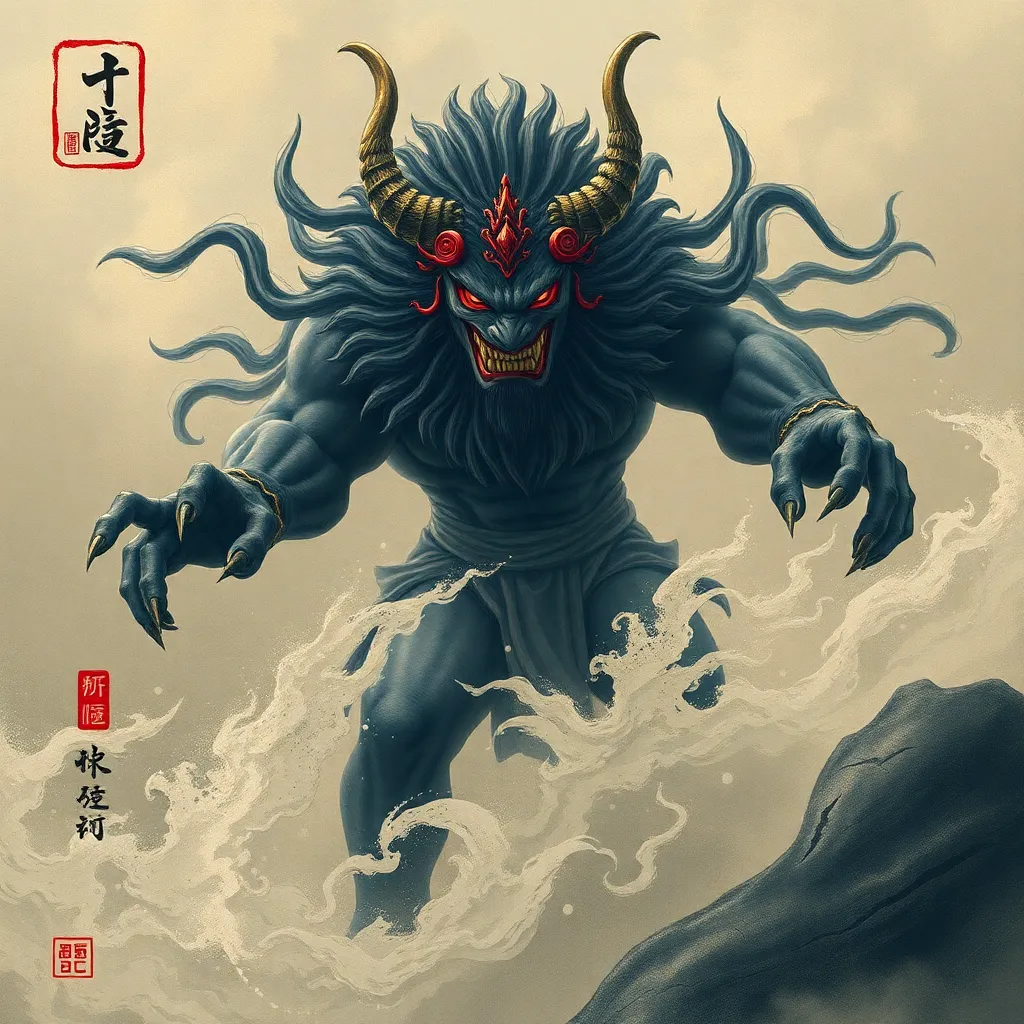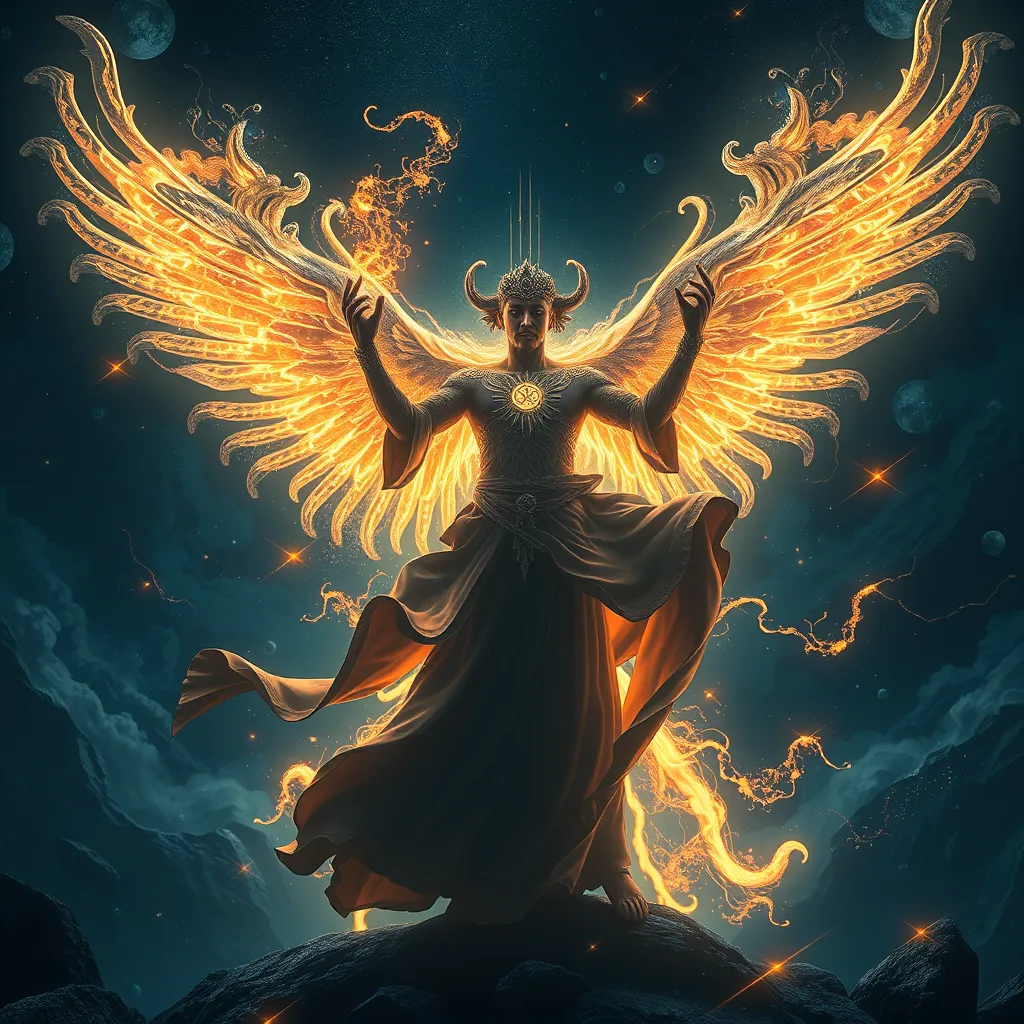From Wilderness to Court: The Shifting Roles of Oni in Chinese Mythology
I. Introduction
In the rich tapestry of Chinese mythology, the figure of the Oni has garnered significant attention for its multifaceted nature. Traditionally viewed as malevolent spirits or wild beings, Oni have evolved over centuries, reflecting shifts in cultural, spiritual, and societal contexts. This article delves into the dynamic roles of Oni, tracing their journey from chaotic wilderness entities to revered figures within the courts of ancient China.
Understanding the shifting roles of Oni is crucial, as it provides insight into the broader cultural transformations that have shaped Chinese identity and folklore. By exploring these changes, we can gain a deeper appreciation for how mythology mirrors societal values and beliefs.
II. Historical Origins of Oni in Chinese Mythology
The origins of Oni in Chinese mythology can be traced back to ancient texts that reveal their early representations. These beings were often depicted as spirits of the wild, embodying the untamed aspects of nature.
Connections to indigenous beliefs and local folklore are evident, as communities sought to explain natural phenomena and the unpredictability of the environment. Oni were frequently invoked in spiritual practices, serving as intermediaries between the human realm and the natural world.
In early Chinese society, Oni played a crucial role in rituals and ceremonies, often associated with agricultural practices and the changing seasons. They were seen as both protectors and disruptors, embodying the duality of nature itself.
III. The Wilderness Aspect: Oni as Wild Beings
Oni are often characterized as nature spirits or wild entities that inhabit the fringes of civilization. These beings symbolize chaos and the raw forces of the natural world, embodying characteristics that can be both terrifying and awe-inspiring.
In many folkloric tales, Oni are depicted as creatures of immense power, capable of causing havoc but also of bringing renewal and fertility to the land. Their wildness is celebrated in various narratives, showcasing their integral role in the ecosystem of ancient beliefs.
- Characteristics of Oni:
- Brutal strength and ferocity
- Connection to natural elements like storms and wild animals
- Representations as spirits of the mountains, rivers, and forests
- Folkloric Tales:
- Stories of Oni as guardians of sacred sites
- Legends of battles between humans and Oni
- Accounts of Oni aiding in agricultural prosperity
IV. The Transition to Courtly Figures
The historical context for the shift from wilderness to courtly representations of Oni is deeply intertwined with the rise of Confucianism and Buddhism in Chinese culture. As these philosophies gained prominence, so too did the perception of Oni, which began to align more closely with human societal norms.
Confucian ideals emphasized order, harmony, and moral integrity, leading to a reimagining of Oni as figures who could embody these values. The depiction of Oni in court literature and art began to reflect this transformation, portraying them as more complex characters who could serve as advisors or protectors.
- Influences on Oni Perceptions:
- Confucianism: Promoting moral behavior and social order
- Buddhism: Introducing the concept of protection and benevolence
- Oni in Art and Literature:
- Paintings depicting Oni in courtly attire
- Literary works presenting Oni as wise counselors
V. Oni in Literature and Popular Culture
Oni have been featured prominently in various literary works throughout Chinese history. These representations have evolved alongside societal changes, showcasing the adaptability of Oni as cultural symbols.
In modern adaptations and reinterpretations, Oni have found their place in popular culture, often appearing in films, television series, and video games. This globalization has transformed how Oni are perceived, sometimes blending elements from different cultures to create new narratives.
- Notable Literary Works:
- Classical novels that feature Oni in pivotal roles
- Modern literature exploring the dual nature of Oni
- The Impact of Globalization:
- Cross-cultural adaptations of Oni in Western media
- The fusion of traditional and contemporary storytelling techniques
VI. The Duality of Oni: From Villains to Protectors
The perception of Oni has undergone a significant transformation, with many tales portraying them as malevolent figures. However, over time, Oni have evolved into protective deities and cultural heroes.
This duality is essential in understanding the complexities of Oni characterizations. They are often depicted as both antagonists and allies, reflecting the intricate relationship humans have with nature and the unknown.
- Malevolent Figures:
- Stories where Oni bring misfortune or calamity
- Folklore emphasizing their chaotic nature
- Protective Deities:
- Oni as guardians of communities and sacred spaces
- Legends of Oni aiding heroes in times of need
VII. Contemporary Relevance of Oni in Chinese Culture
In contemporary society, Oni continue to hold relevance, often appearing in modern festivals and celebrations. Their presence serves as a reminder of traditional beliefs and the resilience of cultural identity.
There has been a resurgence of interest in these figures, with many people seeking to reconnect with their heritage and the stories of their ancestors. This revival highlights the importance of Oni as symbols of resilience and continuity in Chinese culture.
- Oni in Modern Festivals:
- Celebrations that honor traditional beliefs
- Artistic representations of Oni in performances
- Resurgence of Interest:
- Community events focused on folklore
- Educational initiatives promoting cultural heritage
VIII. Conclusion
In conclusion, the roles of Oni in Chinese mythology have shifted dramatically from their origins as wild beings to their current status as multifaceted figures within both historical and modern contexts. This transformation reflects broader cultural changes and the ongoing dialogue between tradition and contemporary society.
Understanding these shifts is significant in grasping the complexities of Chinese culture and the ways in which folklore evolves. The study of Oni and their roles continues to hold implications for future research in mythology and cultural studies, inviting scholars to explore the rich layers of meaning embedded in these ancient narratives.



